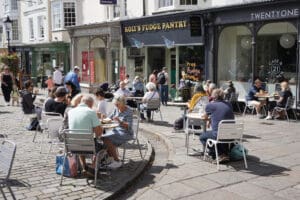Reform UK is facing mounting pressure to prove the legitimacy of its general election candidates after doubts arose about several candidates who lacked photos, biographies, and contact details.
Reform UK has defended the authenticity of all 609 candidates who stood on 4 July, acknowledging that some were “paper candidates” who did no campaigning but were included to bolster the party’s vote share.
The Liberal Democrats have called on Reform to provide evidence of these candidates’ authenticity following concerns about the lack of information on some individuals, who remain unnamed by The Guardian. A Liberal Democrat source stated, “This doesn’t sound right and Reform should come clean with evidence. We need Reform to show who they are. People need to have faith in the democratic process.”
The party’s election website lists numerous candidates with only their name and constituency, omitting further details and providing only a generic regional email address. Many have no online presence and did not campaign, with some not even attending electoral counts.
Electoral rules require candidates to provide their full name, constituency, and have an agent and 10 local voter nominations. Questions have arisen about whether some candidates are listed on the electoral register for their constituencies, with one individual denying their candidacy despite having the same name and location as a listed candidate.
While no evidence suggests the candidates are fake, such a scenario would constitute a serious electoral offence. Reform UK sought to maximise its national vote share with a full slate of candidates, some of whom, despite their anonymity, received thousands of votes.
A Reform source asserted, “All our candidates are categorically real. Given the rush, a few are just paper candidates and didn’t campaign. Some people began as paper candidates but then did campaign, and one of these – James McMurdock in South Basildon and East Thurrock – ended up winning his seat.”
The Guardian has verified that one suspected fake candidate, whose election photo appeared AI-generated, is genuine. Mark Matlock, who received 1,758 votes in Clapham and Brixton Hill, explained his absence from the election count due to pneumonia and clarified that his altered photo was to change his tie and suit colour. Matlock stated, “The image is me. Stupidly I had to get it altered as I couldn’t get to a photographer on time.”
Matlock added that he did participate in a leaflet drop and attributed the rush in candidate placements to the snap election call by Rishi Sunak.
Reform UK raised the most funds of all political parties during the fourth week of the campaign, amassing nearly £600,000. Significant contributions included £200,000 from new donor Zia Yusuf, founder of luxury concierge company Velocity Black, and £125,000 from businessman Jeremy Hosking. Other donors included anti-vax former Tory MP Andrew Bridgen.
AI expert John Kirk, Chief Strategy Officer at ITG, remarked on the controversy, stating, “The use of generative AI technology in official photography and election materials can save time and money but can also cause confusion and suspicion if it becomes clear the images are not sourced from traditional photography.”
Tech expert Suid Adeyanju, CEO of RiverSafe, warned of the broader implications, “In an election riddled with fraudulent emails, misinformation, and deepfakes, the slightest hint of AI-generated imagery on official literature will cause controversy and raise questions about the threat the technology poses to democracy.”
Read more:
Reform UK under scrutiny over authenticity of election candidates




